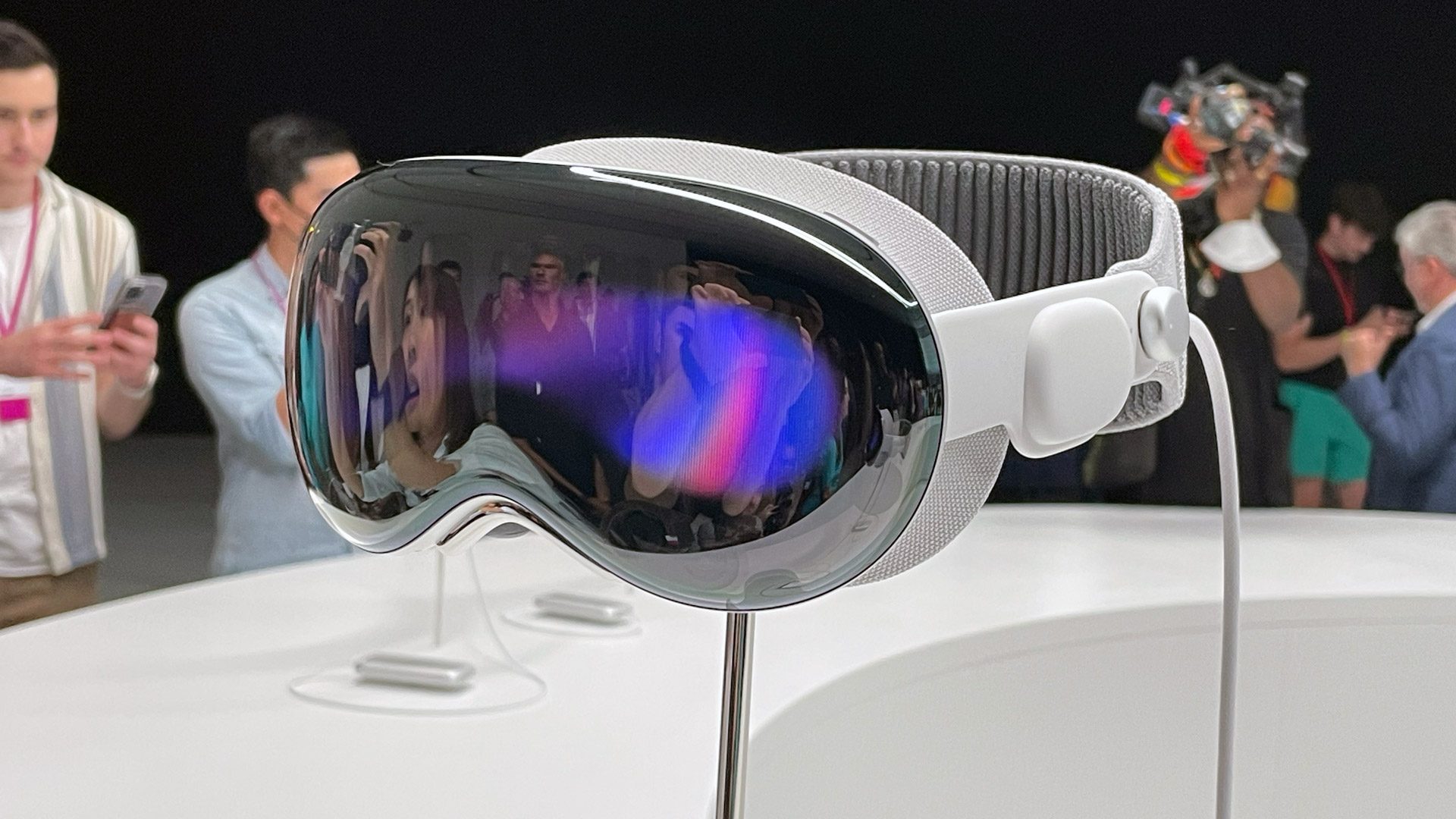At its Southeast Asia Tech Seminar in Bangkok, Samsung offered a closer look at what it believes the future of the smart home should look like. The company unveiled a wave of new appliances powered by SmartThings and framed by a unified vision built around AI, automation, energy efficiency, and connectivity.
But behind the demo scripts and AI buzzwords, not all the features were created equal. While some were immediately practical, others felt like backend logic dressed in marketing speak. And a few innovations, while technically interesting, left us wondering how much they would matter in daily use.

Here’s our first-hand breakdown of Samsung’s 2025 smart home ecosystem, ranked from will this feature make your life easier to just there to sound impressive in a product brochure.
1. Bespoke Refrigerators with Auto Open Door

Samsung’s new Bespoke fridges are available in two models, a 21.5-inch Family Hub edition and a 9-inch screen version. Both are equipped with the new Auto Open Door feature, and it’s surprisingly useful.

The sensor strip lights up constantly and can detect light taps from your fingers, elbow, or wrist. It’s a smart workaround to the common annoyance of trying to open a suction-tight fridge door while carrying groceries or, worse, a full bowl of soup.

Samsung also demoed voice activation via Bixby, where you can say “Hi Bixby, open fridge,” and it will open the left, right or both doors on command. Yes, using the sensor strips is faster, but for those moments when carrying heavy glassware and you don’t want to risk it, it comes in handy.

There are two levels of door opening: Wide Open (around 80 degrees) and Semi Open, both adjustable via SmartThings. Wide Open is self-explanatory, while Semi Open is where the door just pops out, allowing you to swing the door open more easily than having to fight the suction force. According to Samsung, the feature is backed by over 20 patents and uses two separate motors, each responsible for controlling the door opening force and angle.

Both models include AI Energy Mode, which uses predictive machine learning models to optimise compressor and defrost cycles. Unlike older systems that ramp up cooling after every door opening, this model uses real-world data like temperature sensors, humidity, and user behaviour to predict how the fridge will respond and reduce energy use accordingly. For instance, if you simply open the door briefly, the system holds off on activating the compressor, avoiding unnecessary consumption.

As for the interface, the Family Hub model supports daily board syncing, family calendars, recipe suggestions based on available ingredients, and a live 3D Map View of your connected appliances. You can also view what’s inside the fridge from the screen via a camera on the inside. Through this feature, food and beverages can be tagged with expiration dates.

The fridge’s camera sensor also enables user-aware experiences. For example, as you approach, the screen can display relevant info, like your calendar, weather updates, or SmartThings scene suggestions.

While most of these features might be dismissed as gimmicks on other appliances, they are likely to see more use on the fridge, which often serves as a shared family space for notes, photos, and accessories.
2. Bespoke AI JetBot Steam Ultra

If the fridge is the most practical update, the Bespoke JetBot Steam Ultra is the most technically interesting. Samsung has added liquid detection capability that allows the robot vacuum to identify not just solid obstacles, but also both coloured and transparent liquids, something few others in the market do.
It achieves this using a combination of dual RGB cameras and an IR LED sensor. When a liquid is detected, the robot can either mop first or finish vacuuming first based on user settings, and the mop pads lift automatically to prevent cross-contamination.

Samsung also introduced a pop-out side brush and mop extension system, similar to what we’ve seen from Ecovacs. The unit can extend its cleaning tools to reach corners and wall edges. Samsung says the new Clean Station is also improved. But from what we can tell, it seems largely the same as the previous model.
Additionally, the demo showed off a prototype auto-lifting wheel system, allowing the JetBot to climb over dividers and other short obstacles, though Samsung didn’t commit to whether this would make it into final production.
We are ranking the Bespoke AI JetBot Steam Ultra above the Bespoke AI Jet Ultra because these improvements further enhance its autonomous cleaning efficiency and frees up more of your time.
3. Bespoke AI Jet Ultra (Cordless Vacuum)

What sets the new Bespoke AI Jet Ultra apart isn’t just its suction power, but its AI-driven cleaning logic and SmartThings integration.
Through AI Cleaning Mode 2.0, the vacuum can detect the type of surface it’s cleaning, whether that’s tile, hardwood, a doormat, or a layered rug, and automatically adjusts both suction power and brush speed to match.

For example, it can reduce suction when moving across soft mats to prevent sticking or increase suction on hard floors to improve debris pickup. The system also improves manoeuvrability on high-pile rugs, where excessive suction can cause vacuums to dig in or stall. By easing suction when needed, the Jet Ultra balances smooth movement and cleaning performance.
On top of that, the Jet Ultra integrates with SmartThings in a few useful ways. Most notably, it can pause cleaning automatically when you receive a phone call or message on your connected Galaxy device. It can enter low-power standby mode when docked for long periods, helping preserve battery health.

With 400W of suction power, up from 280W from its predecessor, Samsung says the new Bespoke AI Jet Ultra is the most powerful stick vacuum it’s ever made, and currently the most powerful cordless model in the world. The HexaJet Motor, newly designed with a dual-wave diffuser and 3D impeller, increases the motor RPM to 148,000 while keeping the motor unit to just 148g.
The vacuum also includes:
- HEPA filtration (99.97% of 0.3μm particles)
- A high-resolution LCD display for mode selection and maintenance alerts
4. WindFree Air Conditioner with Wearable Integration

The WindFree AC lineup didn’t introduce much that’s notably new, but it did receive some thoughtful updates, particularly Good Sleep mode, which now syncs with your Galaxy Watch or the Galaxy Ring to dynamically adjust cooling based on your sleep stage.
During the demo, Samsung also highlighted Comfort Drying, a feature that controls refrigerant flow to selectively cool certain areas of the heat exchanger for more targeted dehumidification, reducing energy use and eliminating sharp drops in room temperature that traditional ACs suffer from.

The AC unit also continuously monitors indoor humidity, using onboard sensors to trigger or delay compressor activation. In SmartThings, this can be tied to other automations like reducing AC power when windows are opened or ambient conditions change.
Other features include:
- AI Fast Comfort, which starts with rapid cooling before switching to WindFree mode
- SmartThings and Bixby control
- A refrigerant update from R410A to R32, aligning with global eco-standards
The wearable integration is clever, but its real-world impact is hard to verify. There’s no significant new hardware or cooling innovation here, but rather smarter routines built on top of existing systems. Still, it’s a refinement that makes sense, particularly if you already wear a Samsung wearable.
5. Bespoke AI Washer + Dryer (Front Load Set)

The new Bespoke AI Washer and Dryer Front Load Set brings some solid software enhancements. The washer can identify up to five fabric types: normal, delicate, towels, outdoor, and denim, using AI Wash+, and the dryer uses AI Dry+ to detect four fabric types and adjust heat and timing accordingly.
On paper, this is a major AI upgrade. But in practice, the experience isn’t drastically different unless you’re mixing fabric types often. It’s smart, but not transformative.
The 7-inch AI Home Display on both units provide real-time feedback after every cycle: water usage, detergent consumption, and estimated energy savings. This is one of the few implementations where Samsung’s AI is visibly translated to the user, not just running in the background. However, given the cost of these units, the people buying them have little concern about usage, or their housekeeper couldn’t be bothered.
However, this pair solves one glaring issue with the Bespoke AI Laundry Combo. Unlike that machine, which required you to wait for the laundry to be washed and dried before you could put in the next batch, you can wash and dry different batches simultaneously with the Bespoke AI Washer and Dryer pair.
Yes, it does come with a lot of smart features and functions, but since it’s relegated to a corner of the house that’s mostly deserted, it will hardly ever be used.
6. Bespoke AI Top Load Washer

The Bespoke AI Top Load Washer is the first top-load washer in Samsung’s portfolio to feature embedded AI logic, and the core technology is impressive. It identifies fabric types not by touch or scan, but by how water absorption changes motor resistance during the wash cycle.
Samsung demonstrated this with a towel and a blouse of similar weight. As the towel absorbs more water and becomes heavier, the motor detects the increased load, and the machine adjusts the water level, agitation, and timing accordingly. It can currently classify three types of fabric: normal, delicate, and towel.

The washer also features AI VRT+, Samsung’s next-gen vibration reduction system. Unlike previous VRT implementations that relied on basic load balancing, AI VRT+ uses floor type detection via embedded accelerometers. If the washer detects it’s placed on a softer or more uneven floor (like tile vs concrete), it dynamically adjusts motor spin speed and braking torque to reduce vibration and noise during the spin cycle.
So, instead of reinforcing the chassis or improving physical dampening systems to reduce vibration, Samsung has chosen to let AI handle it in software. It’s a clever workaround, but it also raises a valid question: why rely on predictive logic instead of implementing actual hardware changes to fix the root cause?
The answer might come down to cost. If this approach allows Samsung to deliver a quieter, more balanced washer without significantly increasing the price, it could be a worthwhile trade-off, even if the AI logic isn’t 100% effective in every setting.
AI Energy Mode works by analysing the soil level, fabric type, and water load to optimise how much energy is used during a cycle. Instead of simply reducing temperature or extending the wash time like conventional “eco modes,” this system actively balances performance against consumption by adjusting motor speed, cycle length, and rinsing intensity in real time. Samsung claims this can reduce energy use by up to 60%, depending on the load type.
The underlying tech here is smart and well thought-out, especially the use of torque sensing and floor condition awareness. But for most users, these benefits are nearly invisible unless they’re actively looking for them.
Final Thoughts

Samsung’s smart home portfolio is evolving, but at different speeds across different products. Where the company succeeds is in solving clear, relatable pain points: opening a fridge with full hands, recognising liquid spills before they become a nuisance, and integrating device control into your daily tech habits.

But in other areas, like laundry and cooling, the improvements are more subtle, often invisible to the user, even if the backend logic is solid. These aren’t bad products, but they don’t yet feel like breakthroughs.
What’s clear is this: Samsung is building out SmartThings not just as an app, but as a full ecosystem strategy. The more their devices talk to each other, the more those small improvements start to add up.
Just don’t expect everything labelled “AI” to matter equally, yet.






